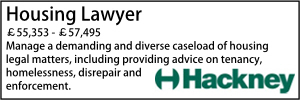Introduction of the Building Safety Bill
- Details
Lorna Kenyon offers some initial thoughts on the scope of the Building Safety Bill.
The Government earlier this week published its Building Safety Bill. Whilst it will take time to fully digest the Bill, there are some key points to note in relation to the scope of the published Bill.
Within the Bill, the regime outlined that it would only apply to “higher-risk buildings” for which the basic height criteria applies; “at least 18 metres in height or has at least 7 storeys". When the draft Building Safety Bill was released last year, it was proposed that a building would also have to contain two or more dwellings; or two or more rooms used for residential purposes or student accommodation. As a result of the proposed scope in the draft Bill and explanatory notes, residential care homes, prisons/detention centres and temporary accommodation including hotels, hostels, guest houses, hospitals and hospices were excluded from the definition.
During the pre-legislative scrutiny of the draft Bill, there were concerns raised regarding the regulation of buildings occupied by those unable to evacuate themselves or without assistance. The Government states that it has recognised those concerns and has broadened the scope of the design, construction and refurbishment elements of the regime set out in the Bill to care homes and hospitals of at least 18 metres or 7 storeys in height.
However, the draft regulations published alongside the Bill make clear that care homes, hospitals, secure residential institutions, temporary leisure establishments and military premises will be excluded from the requirements of the occupation stage of the higher-risk building regime. The Government’s explanation is that while they accept care homes and hospitals should be subject to the enhanced regime relating to their construction, ongoing regulation of their safety during occupation can be undertaken by the Care Quality Commission working in conjunction with the fire service.
Interestingly, the proposed scope in the explanatory notes to the draft Bill last year proposed that temporary accommodation, in general, was excluded from the regime’s scope. Yet, now only temporary leisure establishments, meaning hotels or similar establishments which offer accommodation for the purposes of leisure are excluded. At least on an initial reading, this seems to indicate that temporary accommodation operated by social housing providers and local authorities will be included in the Bill’s scope.
The introduction of the Bill continues the wave of fire safety and building safety reform. Its proposed provisions are complex and will change the focus and breadth of building safety regulation significantly. Based on the passage of the Fire Safety Act 2021, we anticipate that the Bill will face significant scrutiny and debate during its passage through Parliament and that we will be talking about its scope, implementation and contents for many years to come.
Lorna Kenyon is a solicitor at Anthony Collins Solicitors.
Must read
Fix it fast: How “Awaab’s Law” is forcing action in social housing
Housing management in practice: six challenges shaping the sector
Why AI must power the next wave of Social Housing delivery
Sponsored articles
Unlocking legal talent
Walker Morris supports Tower Hamlets Council in first known Remediation Contribution Order application issued by local authority
09-12-2025 1:00 pm
11-12-2025 11:00 am







































